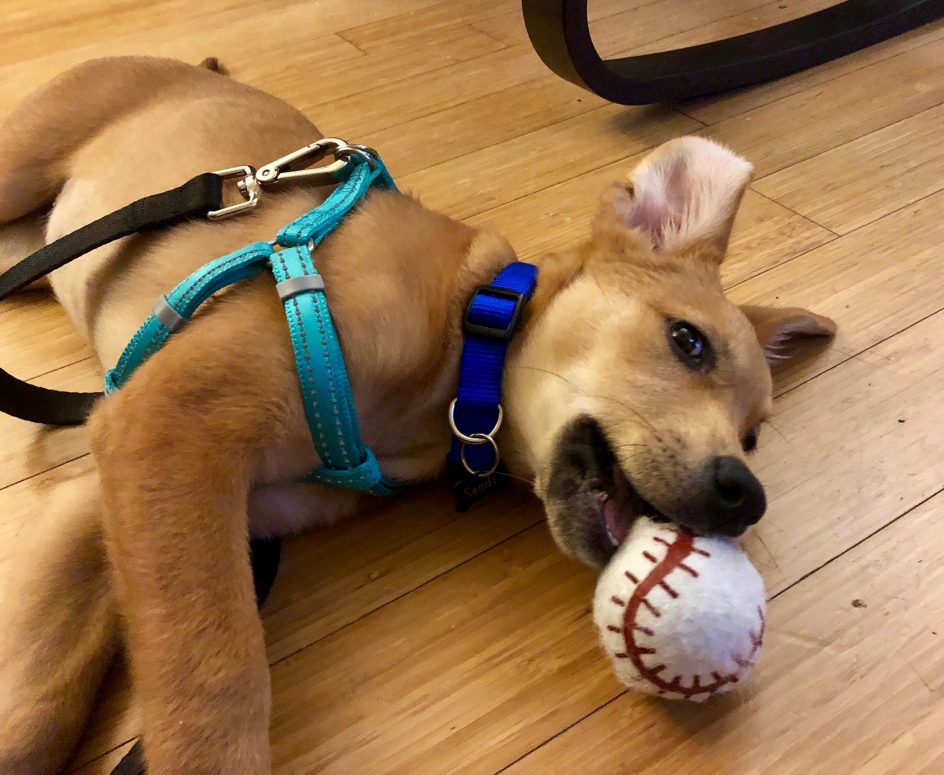
My daughter Emma had her hands full yesterday, managing a new puppy of supposedly unknown origins and breed and a strong-willed and enthusiastic two-year old, Robin. And all of this in a Brooklyn apartment.
She got a little panicky during the inevitable chaos, and I got to be a useful Dad, rare at this stage of both of our lives.
I liked it, it brought back a lot of memories to the time I was really needed.
But I am glad to be of use. All the rescue group said they knew about the dog – Robin named her Sandy – was that she came from Kentucky and was a “rescue.”
They thought she was mostly Lab. I have learned that label is often put inaccurately on dogs to make them more adoptable.
They should have known more, of course.
When Emma told me yesterday that the dog bayed at pigeons whenever she saw them, I got curious and started trawling online. This morning I got an e-mail from Lee RIckets, who lives in Kentucky.
“As a Native Kentuckian,” he wrote, “I think she has got herself a “Cur.” These are common here, more in Eastern Ky….and are used primarily for hunting game. Her’s is either a Walker Cur, Black-mouth Cur or Mountain Cur (which I have).”
I believe Lee nailed it, I think Emma has a “Cur” dog from down South.
The breed, he said, was recognized by the AKC about 20 years ago, they were brought into the state by the early settlers and are known for being fiercely loyal to their owners, they are popular in parts of Virginia and West Virginia as well.
This makes a lot of sense to me, and I got several additional messages suggesting the same thing. Hunting dogs are not like Labs, they have fierce instincts that can not always be curtailed or controlled, although they can make wonderful family treats if trained properly.
And they need a lot of exercise.
But I would never let this dog off leash in New York City or anywhere out of the woods, if she sees or smells a squirrel or raccoon, she’ll be gone. I’m not sure any amount of training will guarantee that that won’t happen.
Emma and I had a long talk about training, and she is doing a wonderful job.
Sandy is spending the night in a crate quietly and comfortably, she and Robin are crazy about one another, she loves to cuddle up with Emma at night, and is (mostly) going to the bathroom outside.
Emma and Robin (and Jay) all love the dog they will be keeping her, barring some bizarre new behavior.
It is important when getting a dog – no matter from who – to know as much about the breeding and litter history and origins as possible You don’t want to bring a hunting into a New York City apartment with a two-year-old without knowing this.
If I could find this out so easily, so could the rescue people. But it won’t matter. Sometimes you just can’t know this things, sometimes you can.
This dog story will have a happy ending.
Thanks to Lee and the others for helping me find out where Sandy comes from. Emma will take it from here.
